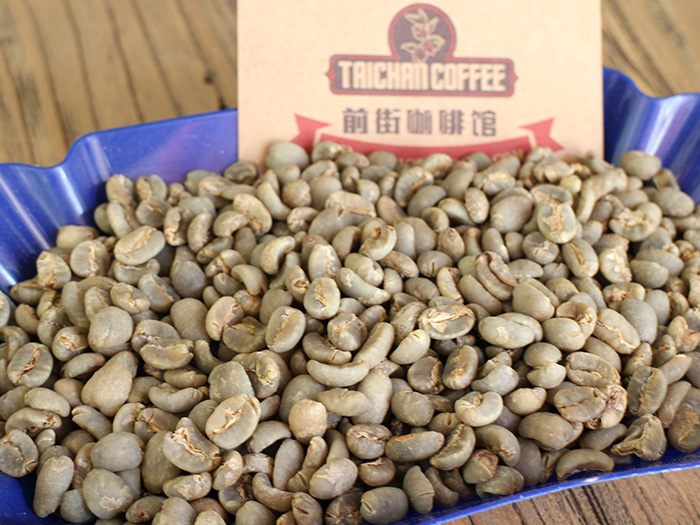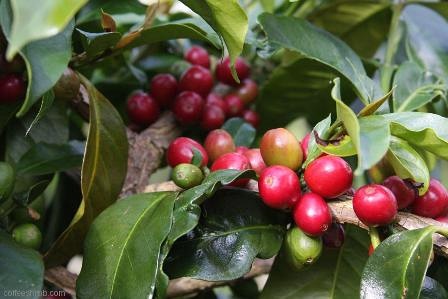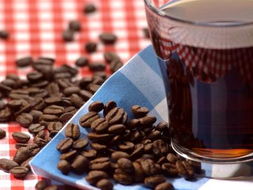How about eating expired Arabica coffee beans? moldy Arabica coffee beans Sumatra Indonesia
Is it good to eat expired Arabica coffee beans?
Is it good to eat expired arabica beans? It's hard to say. It depends on the circumstances.
1. Moldy Arabica Coffee Beans
If you eat moldy Arabica coffee beans, there is no harm in fact, but you will have to stay in the hospital for 10 days.
2. The shell is white Arabica coffee beans
If the shell is white coffee beans, it is serious. The beans must have had worms growing inside them to form the white shell, and the insects inside could be cockroaches, spiders or maggots. It's disgusting to think about it, but you know what? Studies have found that eating this coffee bean by mistake is also okay, because eating more insects is more resistant, and eating insects for many years can also keep youth and beauty forever.
Country: Indonesia
Grade: G1, 19 mesh +
Production area: Gayo Mountain Region, Aceh Province
Altitude: 1100-1300 m
Treatment: Traditional wet planing method
Breeds: Kadimo, Kadulla, Tibika, Sidikalong
Producer: Local smallholder farmers in the Gayo Mountains region
Flavor: Round and pure on the palate, excellent body, spices, herbs
Indonesian coffee is diverse in quality, most of which are named after island sources and markets such as Sumatra, Sulawesi, Jawa or Timur. The advantage of Indonesian coffee is that most coffees are characterized by strong, restrained flavors and lively moderate acidity. Indonesian Mandheling coffee is highly rated by Chinese and is one of the coffee products with the highest acceptance of single-serve coffee.
Mandheling Indonesia has been hailed as the world's best uniquely peeled coffee beans. Mantelin is a trademark product and is now sold as long as it is coffee green beans made from red cherry fruits harvested in Indonesia and processed by this unique peeling method. Mandailing coffee is grown by Mandailing people from Tapanuli region of northwest Sumatra, because at the end of World War II, a Japanese soldier introduced it to the Japanese market, and because of mispronunciation, Mandailing became Mandheling coffee.
Sumatra:
Sumatra coffee is very complex and elusive. Sumatra is a large island, but coffee is not grown all over the island. Coffee trees are grown in large quantities only in the northernmost two of the island's eight provinces-Aceh and Subei: Aceh coffee is mainly produced in Lake Tawar.(Lake Tawar) surrounding the Gayo Mountain, the farmers in this area are mostly local Gayo People aborigines; while coffee in Northern Jiangsu Province is mainly produced in the world's largest super crater lake-Lake Toba production area and Lintong production area in the south, and the local farmers are mostly Batak People aborigines. Due to the large number of smallholder producers and their unique semi-washing methods and the iron deficiency of the soil, coffee beans in this area will have a distinctive blue color at the fresh green stage.
The Gayo region is located in Aceh province, north of Sumatra. Coffee is grown on hillsides surrounding Takegon Town and Lake Tawar. Planting heights average between 1,110 and 1,300 meters in the production area. Coffee is grown by smallholders under shade trees and processed by stripping to exhibit exotic flavors and deep and lively full-bodied flavors. Aceh, in the northernmost corner of Sumatra, is a fascinating and sophisticated place. Aceh is not an area for ordinary people to visit because of its chronic political instability. The Gayo are a determined, hard-working breed, and nearly 20% of coffee processors are female. Under this semi-wet and semi-dry peeling water washing method, coffee farm machines remove the skin and pulp of red cherry fruits. Coffee beans still have a lot of mucus on them, and then they are stored in fermentation tanks for about one day (24 hours). When fermentation is completed, the attached mucus is easily washed away with water. Then sun drying to about 30% to 35% moisture content, remove the shell of coffee beans, you can get to the market. This semi-wet, semi-dry condition removes the outer shell of the coffee beans, which reveal a distinctive dark blue color. This treatment reduces the acidity and increases the body of the coffee, resulting in this characteristic Indonesian coffee.

Important Notice :
前街咖啡 FrontStreet Coffee has moved to new addredd:
FrontStreet Coffee Address: 315,Donghua East Road,GuangZhou
Tel:020 38364473
- Prev

How do you cook Arabica coffee beans with your favorite coffee? First, you have to buy a high-quality coffee.
How do you cook Arabica coffee beans? The first thing is to buy high-quality coffee beans, then to prepare the coffee machine, and the rest is the key points to pay attention to when making coffee. The main points of brewing coffee 1. Choose the way you like to brew coffee. Some people like to brew coffee in a convenient and fast American coffee pot, while others prefer to enjoy siphon coffee.
- Next

Arabica Coffee Bean Price Single Bean Grinder Single Bean Grinder is mainly used for grinding single coffee beans
How to grind arabica coffee beans how to grind arabica coffee beans? It can be carried out mainly by two methods, one is the traditional manual grinding, and the other is the grinding machine, each of which has its own advantages. Manual grinding Arabica coffee beans: manual grinding out Arabica coffee beans, powder particles evenly, can better maintain the original flavor. But the grinding speed is too high
Related
- Detailed explanation of Jadeite planting Land in Panamanian Jadeite Manor introduction to the grading system of Jadeite competitive bidding, Red bid, Green bid and Rose Summer
- Story of Coffee planting in Brenka region of Costa Rica Stonehenge Manor anaerobic heavy honey treatment of flavor mouth
- What's on the barrel of Blue Mountain Coffee beans?
- Can American coffee also pull flowers? How to use hot American style to pull out a good-looking pattern?
- Can you make a cold extract with coffee beans? What is the right proportion for cold-extracted coffee formula?
- Indonesian PWN Gold Mandrine Coffee Origin Features Flavor How to Chong? Mandolin coffee is American.
- A brief introduction to the flavor characteristics of Brazilian yellow bourbon coffee beans
- What is the effect of different water quality on the flavor of cold-extracted coffee? What kind of water is best for brewing coffee?
- Why do you think of Rose Summer whenever you mention Panamanian coffee?
- Introduction to the characteristics of authentic blue mountain coffee bean producing areas? What is the CIB Coffee Authority in Jamaica?

